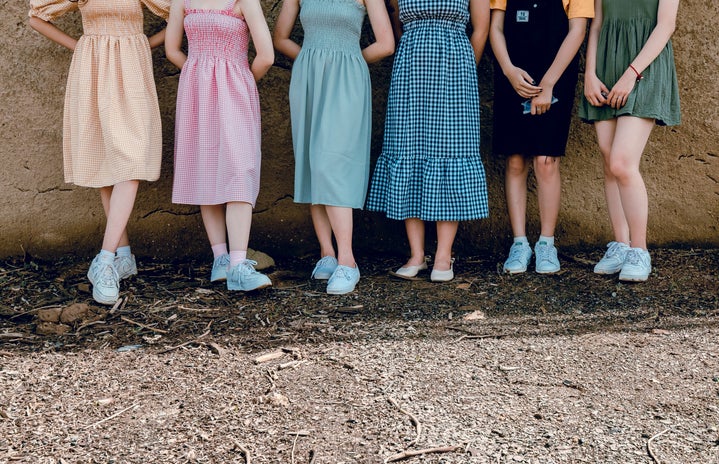Imagine how many difficulties women would have faced in the 19th century to be recognized for their own creations. Throughout human history, they made fascinating discoveries for science and society, but didn’t receive the proper recognition merely because they were women in the middle of a patriarchal and conservative society. The truth is that a woman’s place is wherever she wants it to be. Get ready to be surprised by remarkable discoveries made by women.
Theory of Radioactivity
Marie Curie’s Theory of Radioactivity is one of the major contributions to 19th-century science. Curie made essential discoveries about the radioactivity, revealing the divisibility of atoms and their nucleus. After those discoveries, she and her husband Pierre Curie started to do scientific research, and together they found the elements radium and polonium. She became the first woman to win a Nobel Prize – an award created to recognize individuals who elaborate academic works, researches and policies for the benefit of humanity – and became the first person in the world to receive two Nobel Prizes.
Even with her notable contribution to human science, she faced discrimination and harassment due to the misogynistic setting of academia. Despite all the sexism and intolerance, Currie remained determined and committed herself to science until the end of her lifetime, she passed away due the consequences of constant exposure to radiation.
Her legacy in the study of radium and polonium were essential to the development for the atomic bomb. She was so important for science that she was honored with an element in the periodic table, the Curium. Learn more about her life here.
Aquariums
It was a young dressmaker from the 18th century who invented a system for recreating aquatic environments in glass containers, that we know today as aquariums. Jeanne Villepreux-Power was born in Juillac, in France, and at the age of 18, she walked 400 kilometers from her hometown to Paris, in search of work as a dressmaker. In 1818, she married James Power and they soon moved to Sicily.
On the island, Jeanne Villepreux aroused her curiosity for natural studies, especially the study of marine animals. After researching the local fauna and flora, she created a mini ecosystem inside a container, to study the functioning of the Argonauta argo molluscs, and she was able to verify that they produce their own shells.
Home security system
Marie Van Brittan Brown, a black American woman, invented the first home security system in 1966. Brown worked as a full time nurse, and was always worried about her home, because she lived in a dangerous neighborhood in New York City. So, she developed a monitoring system, which worked with a combination of four peepholes, one camera and a microphone. From any room of the house, Brown could see through the camera connected on monitors. Also, she designed a remote system to open the door and an emergency button to call the authorities.
She released the patent “Home Security System Utilizing Television Surveillance” in 1969. Her invention revolutionized the world forever, and it certainly saved many lives.
Cataract Surgery
The Dr. Patricia Bath discovered a tool to fix cataracts – a clouding of the lens that can cause blindness – in the early 1980s. She found a way to remove the cataracts in a less invasive way, by a laser surgery. Her invention, the Laserphaco, is a mark in history, since, according to the World Health Organization, cataracts are one of the leading causes of blindness throughout the world.
Furthermore, Bath was the first woman of Jules Stein Eye Institute, and the first woman to conduct a post-graduate program in ophthalmology.
Orelhão
Chu Ming Silveira, born in China and naturalized Brazilian, was an architect who designed the “Orelhão,” a telephone booth characteristic of the country. Silveira was working at Companhia Telefônica Brasileira when she was invited in 1971 to develop a protective enclosure for public telephones, balancing functionality and beauty, with the patents “Chu I” and “Chu II”. The design of the booth gained popularity among the popular taste, who nicknamed it “Orelhão”, due to its shape similar to an ear.
First computer program
Ada Lovelace, born in 1815 (London, England), was the first computer programmer in history. She was homeschooled and taught by Augustus De Morgan, who helped her with mathematical studies, especially advanced calculus.
Lovelace met Charles Babbage in June of 1833, who was developing an analytical machine, a precursor of what can be called a computer. She was fascinated by Babbage’s work, so much that she became directly involved in his studies. Ada Lovelace developed an algorithm that computed the “Bernoulli numbers”, which became known as the first computer program developed. Charles Babbage was so impressed with Lovelace’s work that he called her “The Enchantress of Number”.
Wi-fi
Hedy Lamarr was a very famous actress in Hollywood in the 40s but, behind the a movie star, she was also a remarkable scientist. Despite having a successful career, Lamarr felt deeply troubled by the state of the world at that time, with World War II. In 1940, the actress met the composer George Antheil, and together they conceived an encrypted a communication system called frequency-hopping. Then, Hedy realized that, if the transmitter and receiver constantly changed their sound frequencies, they could communicate with each other without being intercepted.
Despite the invention being patented in 1942, the US Navy did not support the implementation of this new system. The project was forgotten until 1962, when American troops used frequency hopping during the Missile Crisis in Cuba. The Austrian actress was only recognized for her invention in 1997 when the Electronic Frontier Foundation awarded her for this exceptional work.
The idea behind the operation of frequency-hopping inspired the creation of Wi-Fi connection, which is indispensable in today’s world to ensure secure and reliable communication between people.
It’s fascinating to realize that we live in a world shaped by women as well, yet often only famous men from history are remembered. It is time to change that and recognize and appreciate our own brilliance.
————————————–
The article above was edited by Fernanda Miki Tsukase.
Liked this type of content? Check Her Campus Cásper Líbero for more!


